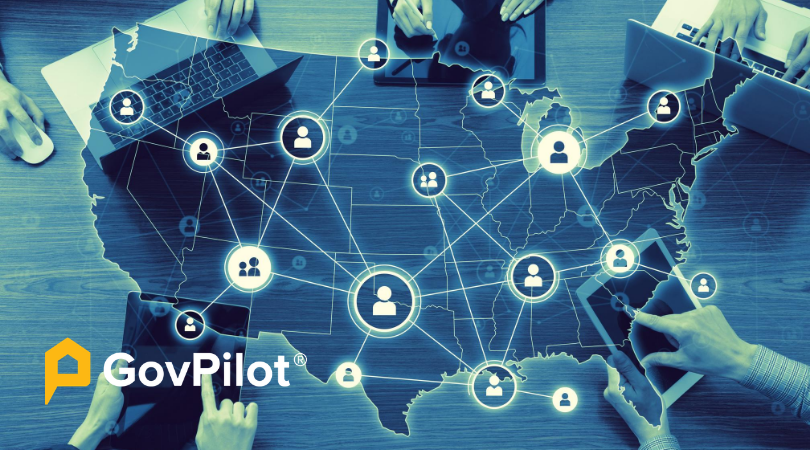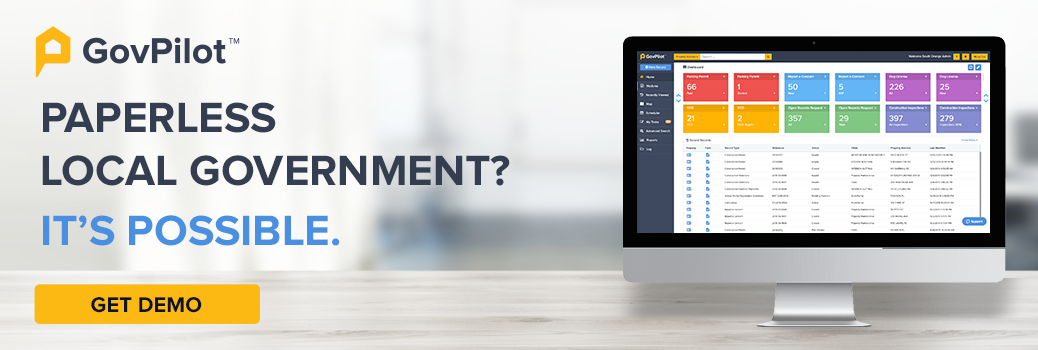What words come to mind when you think of “transformation”? Do you think of opportunity or innovation? How about efficiency, or new technology? What about difficult, or insurmountable?
The truth is that real, effective transformation of any kind is hard, but it is absolutely worthwhile. In fact, any successful transformation does not and cannot occur overnight. Transformation is a journey, and the same is true of digital transformation efforts for local government. There are challenges on the road to achieving IT modernization and unlocking the efficiencies that digital technology modernization enables.
A recent survey found that seventy-six percent of local government officials say their cities, in the wake of the COVID-19 pandemic, will adopt more software to streamline public services and update IT infrastructure moving forward. Respondents expect projects that move forward in the next twelve months will be focused on enabling work from home and flexible schedules, online revenue capture and payment, and community engagement and communications.
According to the same survey, nearly 80 percent of respondents believe that the shift from paper to digital processes will be permanent and bolstered as a result of this global pandemic, with 80 percent believing that software that promises savings (e.g. staff time) has become more attractive since March. That sentiment is strongest when asking leadership.
As with any worthwhile initiatives there are challenges on the road to success. There are several critical challenges of digital transformation for local government which must be taken into account and considered prior to and during embarking on such an important project. Remember, digital transformation for any organization - and especially for local government - must take into account factors beyond the technology updates themselves.
Five of the top challenges to digital transformation that local governments must consider, include:
Goal Setting and Strategy Alignment
“You can’t manage what you can’t measure”. It’s an old business adage that holds true when it comes preparing for, and managing the transition to digital processes. Don’t go digital for the sake of going digital or even just to become more efficient. Ask yourself, “what does success look like?”, “What is currently holding us back? Where are our inefficiencies?” “Where and how do we expect digital transformation initiatives to help our government?”
The pandemic caused local governments to rethink their digital strategy. The rapid switch to remote work, forced governments to embrace digital processes and other innovative technologies such as cloud-based software or virtual desktop networks.
Ultimately, it is critical to set goals that align with your overall strategy. Goal setting is critical in order to be able to set benchmarks and measure the success of digitization efforts.
If your goal is to improve efficiency and speed of services delivered but are understaffed and cannot afford to hire and train new employees, perhaps the automation and efficiencies realized through digital transformation strategies can enable a department to transfer employees to another department in need.
Budget, Funding, and Priority Setting
According to a recent report from Deloitte, many public bodies struggle to fund core citizen services, let alone investments in digital initiatives—even though digital transformation is widely recognized as a route to substantial cost savings. While 82 percent of organizations perceive digital technologies as an opportunity, only 44 percent managed to increase investment in those initiatives over the last fiscal year.
Leaders trying to drive change always face competing priorities—in particular, many struggle to find a balance between transformation and “keeping the lights on.” Public bodies that successfully navigate their goals tend to have coherent, realistic strategies and well understood business cases.
As the report notes, digital transformation has been widely recognized as a way to achieve significant cost savings and even to generate previously unrealized revenue.
The COVID-19 pandemic has impacted the budgets of local governments nationwide, and forced local officials to balance immediate public needs with critical future investments. Fortunately, the CARES Act allows for governments to make cloud-based software purchases that help address the government’s response to the pandemic and improve response to citizen needs - as long as the purchase was not accounted for in the municipality’s budget as of March 27, 2020, and the purchase is incurred between March 1 and December 30, 2020.
Implementation
For local government, implementation of new processes and the integration of digital technology must be done in a way that does not hinder employees’ ability to serve their communities while they are learning a new system. Furthermore, historical data - either from paper records or legacy systems - must be imported into any new digital platform so that a government can provide quality service without interruption or data loss.
GovPilot, offers more than 125 digital business processes, forms, and tools with best practices in mind. From OPRA / FOIA requests, to Building Permits and Code Enforcement, GovPilot’s modules represent the gold standard in digitized workflows, and are seamlessly integrated with one another for easy user experience and optimal performance.
Modules from GovPilot are proven effective, work out of the box, and can be deployed rapidly with minimal set up or customization. Recently, over the course of three weeks, GovPilot deployed seventeen critical modules with employees from Jackson Township , New Jersey, transitioning their paper process and legacy on site server-based system to the cloud.
Onboarding & Digital Culture
No digital transformation or Information Technology modernization initiative can be successful without people and an organizational culture that embraces innovation. Employees, staff, and elected officials must not only be trained to learn and use new technologies, but encouraged to adopt them over the long term rather than reverting to old processes which might be more familiar and comfortable in the short-term.
This is where digitally savvy leadership is important. Digital leaders who understand the potential of big data analytics, machine learning and change management can foster cultural change which helps to make employees feel part of the transformation process. This in turn increases the speed and efficacy of technology adoption across the organization.
GovPilot’s experience in onboarding includes transitioning staff who can sometimes be reluctant to change and adoption of new technology. Our customer success representatives work hard to achieve immediate wins and create champions within your organization so that training and adoption comes naturally. Ultimately our aim is to complete module onboardings within 45 days.
In addition, GovPilot’s support team is highly responsive and available to troubleshoot any issues during normal business hours via phone, email, and live in-program text chat.
External Communication
While the move to paperless government is crucial for organizations looking to save money and engage a younger generation of constituents, it’s equally important to focus efforts on reaching out to the vulnerable populations in your district – the elderly, the poor, and minorities – who may not have broadband internet access or be comfortable with the technology required to submit digital applications, pay their bills online, or access your agency’s GIS platform.
When going paperless, organizations need to make sure they are providing equal access to information and support for all demographics.
Always consider what and how things should be communicated to citizens when implementing new technology. New language on the website, an ongoing social media campaign, or a press release placed with local news outlets are all good options. Governments should lean on their vendors -- many of which offer educational and marketing materials available as part of their services.
Ultimately, every new technology a local government implements should always either improve citizens’ lives, save them money or both. Customer experience - or in this case, constituent experience is critical to digital transformation success.
In Conclusion
In an era characterized by rapid modernization, increased constituent expectations, shrinking budgets, and unpredictable outside disruptions, local governments’ reliance on arcane paper-based processes drains its scarce resources and limits its ability to fully serve constituents.
Moving forward, perhaps catalyzed by the COVID-19 pandemic, successful local governments will be more flexible, adapting to the one constant of the new digital age: change itself. They will re-imagine their services and continually innovate the way they engage with customers - their constituents. While continued digital evolution may see some public bodies struggle as the environment changes around them; others will take advantage of all that digital transformation changes can offer—and thrive. When we think of the digital transformation journey, ancient wisdom applies:
“The secret of change is to focus all of your energy, not on fighting the old, but on building the new.” - Socrates
Interested in learning more?
Our Solutions Specialists are ready to speak with you about your government's current processes and needs, and make recommendations that are specifically tailored to your local government. Schedule a FREE 15-minute consultation. Let's talk!










